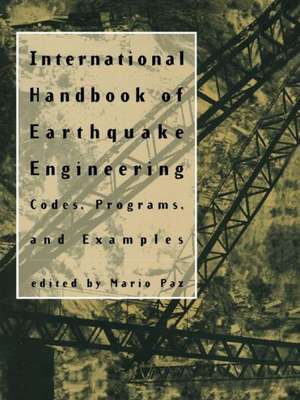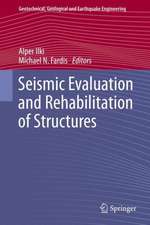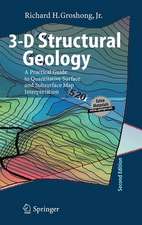International Handbook of Earthquake Engineering: Codes, Programs, and Examples
Autor Mario Pazen Limba Engleză Paperback – 13 oct 2012
| Toate formatele și edițiile | Preț | Express |
|---|---|---|
| Paperback (1) | 1403.31 lei 6-8 săpt. | |
| Springer Us – 13 oct 2012 | 1403.31 lei 6-8 săpt. | |
| Hardback (1) | 1107.11 lei 38-44 zile | |
| Springer Us – 27 feb 1995 | 1107.11 lei 38-44 zile |
Preț: 1403.31 lei
Preț vechi: 1711.35 lei
-18% Nou
Puncte Express: 2105
Preț estimativ în valută:
268.76€ • 276.90$ • 225.14£
268.76€ • 276.90$ • 225.14£
Carte tipărită la comandă
Livrare economică 24 februarie-10 martie
Preluare comenzi: 021 569.72.76
Specificații
ISBN-13: 9781461358596
ISBN-10: 1461358590
Pagini: 568
Ilustrații: XIX, 545 p.
Dimensiuni: 210 x 280 x 30 mm
Greutate: 1.38 kg
Ediția:1994
Editura: Springer Us
Colecția Springer
Locul publicării:New York, NY, United States
ISBN-10: 1461358590
Pagini: 568
Ilustrații: XIX, 545 p.
Dimensiuni: 210 x 280 x 30 mm
Greutate: 1.38 kg
Ediția:1994
Editura: Springer Us
Colecția Springer
Locul publicării:New York, NY, United States
Public țintă
ResearchDescriere
The subject of earthquake engineering has been the focus of my teaching and research for many years. Thus, when Mario Paz, the editor of this handbook, asked me to write a Foreword, I was interested and honored by his request. Worldwide, people are beginning to understand the severity of the danger to present and future generations caused by the destruction of the environment. Earthquakes pose a similar threat; thus, the proper use of methods for earthquake-resistant design and construction is vitally important for countries that are at high risk of being subjected to strong-motion earthquakes. Most seismic activity is the result of tectonic earthquakes. Tectonic earthquakes are very special events in that, although they occur frequently, their probability of becoming natural hazards for a specific urban area is very small. When a severe earthquake does occur near an urban area, however, its consequences are very large in terms of structural destruction and human suffering.
Cuprins
Part I: Introduction to structural dynamics and earthquake engineering: Structures modeled as a single degree-of-freedom system; Seismic response and design spectra; Structures modeled by generalized coordinates; Structures modeled as multidegree-of-freedom systems; Part II: Earthquake resistant design of buildings: Countries in seismic regions; Algeria; Argentina; Australia; Bulgaria; Canada; Chile; China; Colombia; Costa Rica; Egypt; El Salvador; France; Greece; Hungary; India; Indonesia; Iran; Israel; Italy; Japan; Mexico; New Zealand; Peru; Portugal; Puerto Rico; Romania; Spain; Taiwan; Thailand; Turkey; Union of Soviet Socialist Republics [Currently known as the Commonwealth of Independent States (CIS)]; United States of America; Venezuela; (Former) Yugoslavia; Appendix; Diskette order form; Index.












